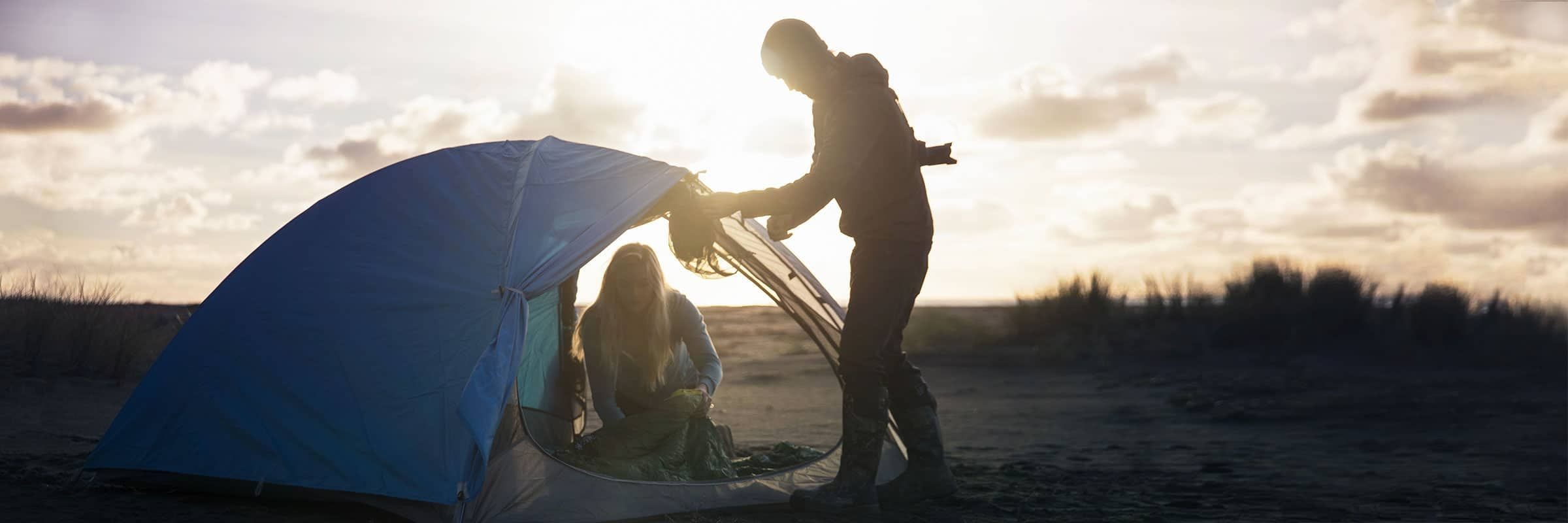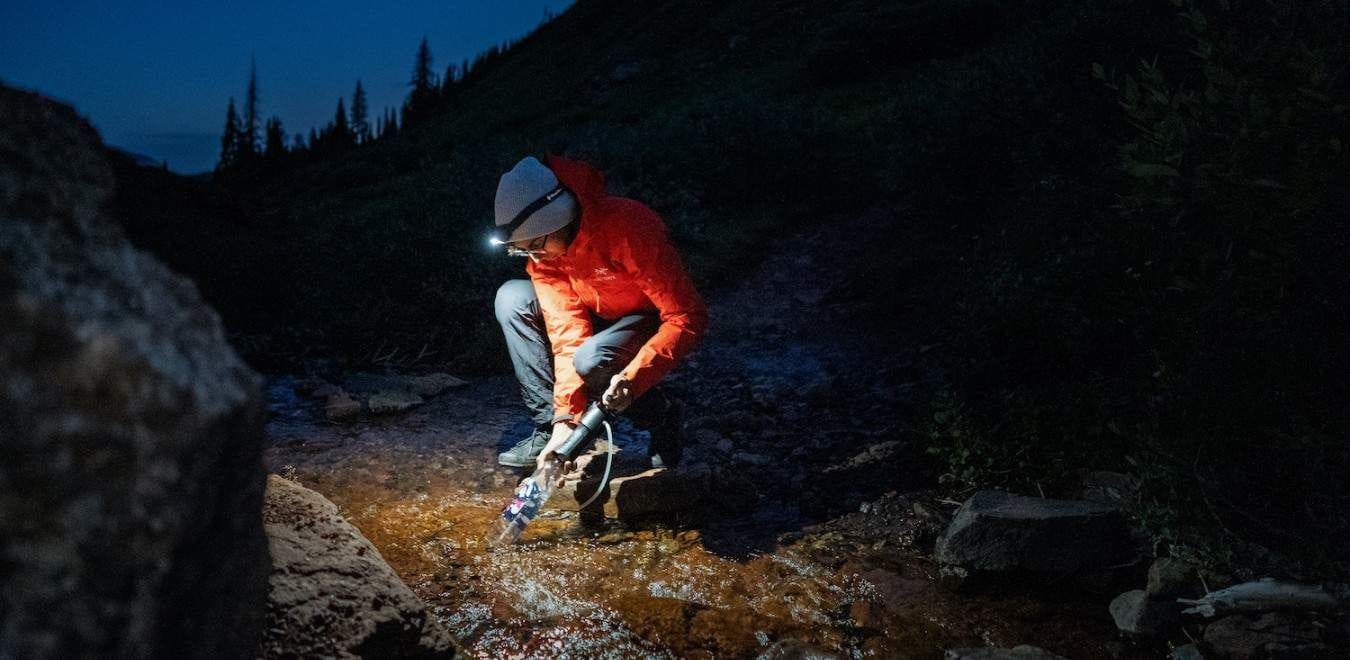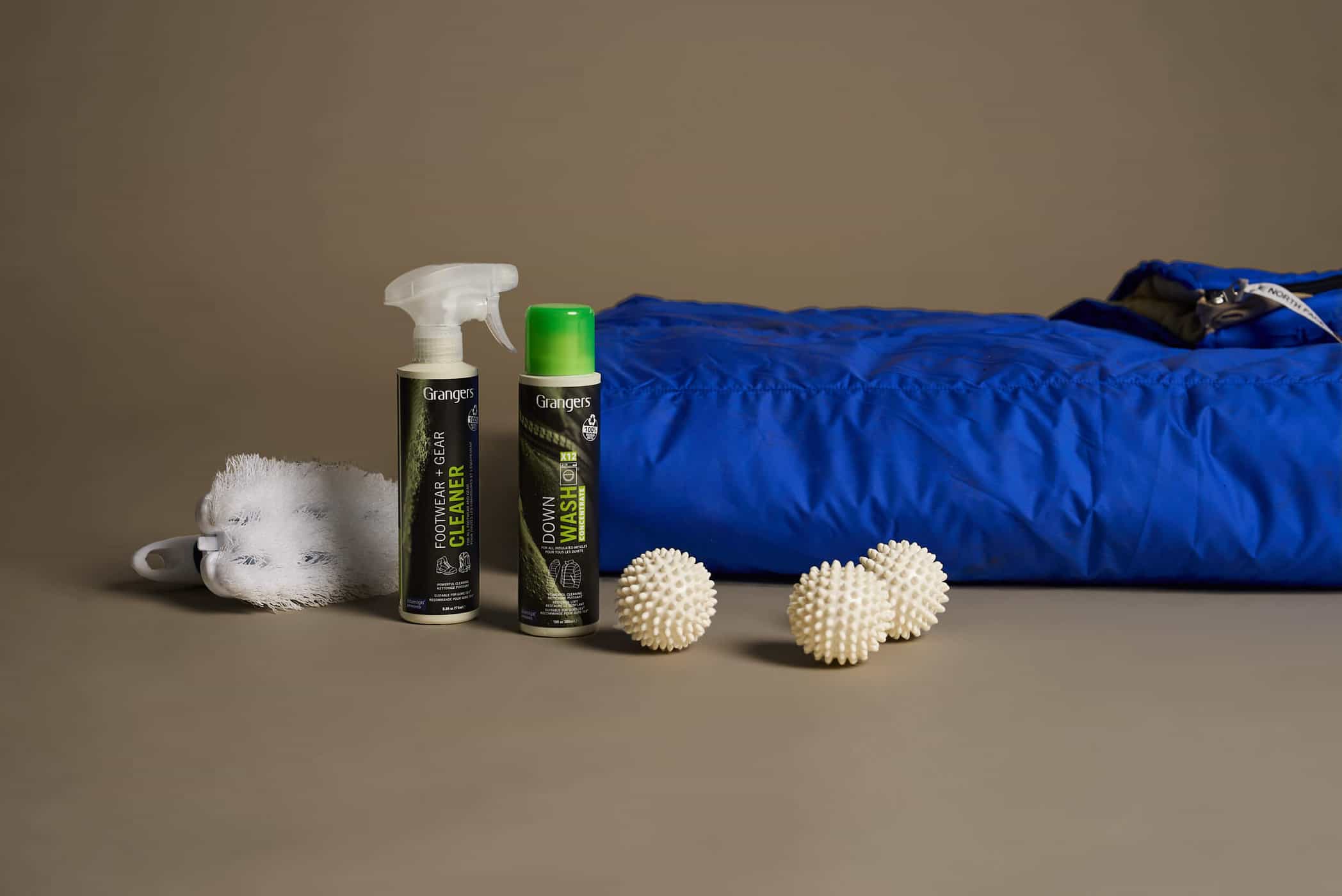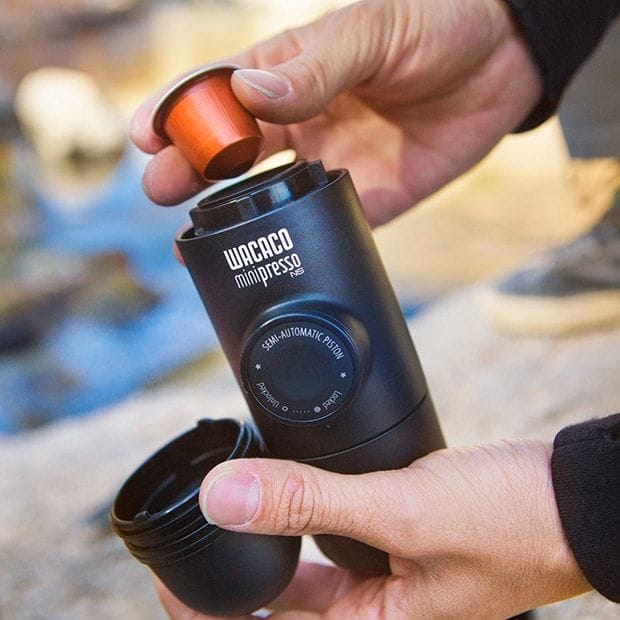In the 1800’s, camping equipment was very heavy and often transported using boats due of its connection with the pleasure boating craze of the late Victorians. Since then, improvements have made camping more accessible and more mobile thanks to newer, lightweight products.
Along with these weight improvements have come more sophisticated products that have created new categories, new limits and new expectations.
Every adventure junkie has their preference and has dealt with a little trial-and-error process in order to discover their ideal products. We have created a guide to ease your shopping stress and add ease to your tent shopping experience.
- Determining the size of tent you should get
- Decide what uses the tent will be used for
- Seasonal ratings for tents
- Tent features and add-ons
How Many Are Sleeping in your Tent
One of the first steps to tent shopping is identifying how many people you will be housing in your tent. Are you planning to go on solo expeditions alone? Weekend trips with just you, your dog and a close mate? Or, are you looking for a little cozy abode away from home for you and your friends’ weekend getaways to the lake? Whatever the adventure may be, you want a tent that will be able to accommodate your needs.
When deciding on the size of your tent, keep in mind that there is no industry standard for per-person tent dimensions. Each brand will vary in size depending on its suggested capacity. Generally, the per-person dimensions for tents are going to be a tight fit so plan accordingly.
If one of your group is a night-time thrasher who needs a little extra arm and leg room or an overpacker with too many bags, you may want to opt for a slightly larger tent. If you’re three people, you may want to go for a 4-person tent instead. That little extra space can save your sanity and the overall morale in the tent.
Tent sizes can range anywhere from one person to 12 or more depending on what their intended use is for. Although in most cases the larger the tent, the heavier it is, with new technologies you can find yourself a backcountry-worthy tent to set up basecamp for you and your crew on your next remote adventure.
What is the Intended Use For Your Tent?
Are you looking for a spacious, shaded shelter to lay your head after a long day of fishing and floating on the river? Or, do you plan to hike for 5 hours up to Garibaldi Lake and pitch your tent for the night and check out the Black Tusk the following day? You need to decide whether you are looking for a tent that you will be carrying into the wilderness or one that will be carried no more that 100 feet from the car to the camping spot.
Car Camping
If you are going to be doing mainly car camping then weight is not issue and your options are nearly limitless. You can go for something funky like the with lots of space and ample headroom so you can stand-up inside and have the ultimate glamping experience.
These roomy tents are great for many reasons be it having the ability to stand up straight while moving around or psychedelic patterns and colours, but they aren’t for everyone.
Backountry & Hiking Tents
If you’ve got some overnight camp-outs planned out in the wilderness, you’re one crucial deciding point will be the weight of the tent. If you’re going to be hiking for multiple hours hauling your tent on your back, you’re going to want something simple and lightweight. These tents weigh less than 5lbs and will provide the shelter you need when it is time to hit the hay after a long day of hiking or biking.
When you’re looking at the specifications for a tent, make sure you check out the weight, especially the packaged weight. This is the weight of the tent and everything it comes with including the stuff sack, poles, guy lines – everything! Keep in mind that this is the heaviest the tent will ever be. Divide your 3 person tent among the 3 people you are going to be camping with and the weight will be even less for each person.
Tents are Rated By the Seasons
Once you’ve figured out whether you need a lightweight tent or a heavyweight, home-away-from-home you can tackle the next question: do you get a 3-season tent or a 4-season tent? What’s the difference? Are there 1-season and 2-season tents too?
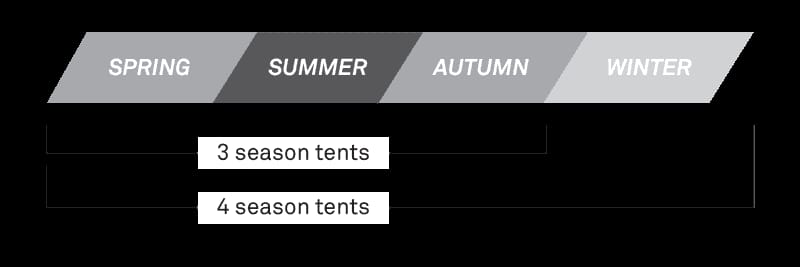
When it comes to seasonal ratings of tents, the most common is going to be 3-season and 4-season tents. Yes, there are 1-season and 2-season tents but they can only be used certain times of the year, so unless you are camping solely in tropical climates where the sun is always shining, you’re going to want to stick with 3-season and 4-season tents.
1-Season Tents
Designed to simply keep you protected from solid objects like a pinecone falling from the tree overhead or the buzzing mosquitos that are waiting for you impatiently on the other side. These tents are generally only used in the summertime as they are more often made from mesh to maximize airflow, labeling them more as a mosquito net. There is no protection from wind and rain so if you’re going to be experiencing wetter and cooler weather, a 1-season tent isn’t the choice for you.
2-Season Tents
Meant ideally for late summer or early spring when the weather conditions may include a little drizzle of rain or a little bit of wind, but nothing more than that. These tents are generally a single-skin tent and will have a waterproof coating (DWR) on the outside to keep the rain out although they may leak in consistently wet weather. Due to the lack of breathability, a 2-season tent may condensate overnight so items near the walls may get damp.
These tents are ideal for light, camping excursions in moderate weather or for providing some shade for the young ones while you’re at a picnic in the park. If you are looking for a tent with more than your basic waterproofing and a more technical weather-design, you’re going to start wanting to check out the 3-season tents.
3-Season Tents
Great for camping from spring to autumn. These tents are made to protect you from the wet, the cold and the wind. They will generally be designed with 2-layers and taped seams. In order to withstand gusty weather, a 3-season tent will have stronger tent poles, tough guy-lines and strengthened pegging points.
3-season tents will have better ventilation than 2-season tents avoiding condensation build-up inside and airflow on the warmer days. Generally, they will be equipped with a storage vestibule at the front of the tent where you can leave your bags and shoes under cover.
If you are a beginner camper, the possibilities of a 3-season tent make them the right choice for you. You are not limited to only summer camping and you can venture out even if the weather is looking gloomy.
4-Season Tents
Ideal to be used year-round in all types of weather including a blizzard on top of a mountain. These tents will have very strong poles and feature a wind-proof structure to withstand strong gusts for your mountain-top excursions. The materials used in 4-season tents will be very durable and have adequate finishes to combat the worst conditions including horizontal rain coming from all directions.
Although they are labeled as 4-season tents and ready to use year-round, a 4-season tent may be better off used just for winter camping as they can become very warm for camping in the summer months.
Because 4-season tents are made with the highest quality materials for tent gear, they will fall more on the pricier side. If you are an adventurer who doesn’t let anything stand between you and your next adventure, a 4-season tent may be worth investing in so you can stay safe and warm on your year-round activities.
Tents With a Rainfly
Most 3 and 4-season tents will be equipped with a rainfly because this is the waterproof cover which protects the tent from rain and dew. A rainfly will fit over the top of your tent and generally come in two styles.
- A roof-only rainfly will only cover the top of your tent and still allow some light to come in through the sides. Although these don’t offer as much protection, they will still keep you and your gear dry inside.
- A full-coverage rainfly will offer maximum protection and will keep you and your tent dry in rain and wind when it’s more than just a drizzle.
Tents With a Gear Vestibule/Garage
A gear vestibule or garage is sometimes integrated into the rainfly of a tent like on the Marmot Tungsten UL 4. This vestibule is ideally used for storing your boots and shoes as well as packs so they are out of the rain and stay dry.
For those tents that do not include a gear vestibule integrated into the rainfly, sometimes they can be purchased separately. Keep in mind though, that not all tents are compatible for gear vestibules and will quite often only be compatible with the tents made by that particular brand.
Other Tent Features
Other things to look out for when tent shopping are the more technical features. These features include the tent materials, the ventilation, guyout loops and even interior loops and pockets. Like anything, the more features a product has usually equates to a more performant product and higher price.
Ventilation
The more mesh panels you find on a tent skeleton, the better ventilated it will be. They also allow air to circulate and keep you cool and fresh at night. This ventilation will also regulate the condensation and offer scenic views in the morning and starry skies at night,
Durability
When it comes to tent materials, the more rugged bomb-proof tents will be made using higher-denier fabrics. These fabric will them more sturdy and durable. For those looking for a tent that can withstand all weather conditions and rugged terrain, you want a tent equipped with higher-denier fabrics and taped seams.
Guyout loops
Guyout loops are more oftenly found on higher-quality tents that are made to withstand a variety of weather conditions including high winds. These features will be found on the outside of the tent body and are used to secure your tent when the winds pick up.
Internal pockets
When you’re out in the backcountry and nature calls at night, scrambling around the tent for your headlamp can be a hassle and a pain for everyone. For this, interior pockets and loops can be your savior. Having internal pockets inside a tent are very convenient and a great place to stash a mobile phone, a headlamp and even some chapstick. Majority of tents will be equipped with internal pockets and a loop to hang a lantern at the top center of the tent ceiling.
Tent footprint
A footprint is a groundcloth which is used to extend the life of your tent floor. Although they are generally made of a tough, tarp-like material, the terrain and usage can eventually take a toll on the tent floor.
Footprints are generally sold separately and will often be compatible to a particular tent so they are sized to fit. Most brands will sell tent footprints for the models that they carry. They aren’t mandatory, but if you want to avoid having to replace your tent due to a hole or rip in the tent floor after camping on some rugged terrain, a footprint is a much cheaper option.
Let’s Get Camping!
You’ve got your tent, so what are you waiting for, get out there and camp this weekend. Set up a tent in your living room, basement or even the backyard. Throw away the electronics for the evening and camp out in your new cozy, abode.
